
|
My two 1951 OIP 6x30 binoculars are marked as having been made by O.I.P Gand , which is Optique et Instruments de Precision : an optical and instrument maker in Ghent Belgium (Gand is French language Ghent), founded in 1919. These Belgian military binoculars are marked as property of the A.B.L. ( Armee Belge-Belgish Legere/ Belgian Army) |


|
A.B. 8x38 Type 31 Belgian Military binoculars made by Optique et Instruments de Precision (O.I.P.) |
|
My OIP 8x38 type 31 Belgian Army binoculars are marked as having been made by O.I.P Gand , which is Optique et Instruments de Precision: an optical and instrument maker in Ghent Belgium (Gand is French for Ghent), founded in 1919. These Belgian military binoculars are marked as property of the A.B. ( Armee Belge), and type 31 binoculars are frequently described as being an artillery model, probably because of a very detailed vertical and horizontal grid that may be designed for artillery shot fall correction. |




|
Japanese External Reverse Porro Prism Binoculars. WEBSITE MUSEUM |
|
OTHER BINOCULARS #10 & OPTICAL SIGHTS (MOSTLY MILITARY) |
|
WWI French Hunsicker & Alexis Paris and MG marked (Minist è re de la Guerre) military 8x binoculars, also British Govt. military broad arrow property & disposal marked, and also marked to a Royal Flying Corps pilot who died in a RFC plane crash in 1918 in Egypt. |
|
These are another pair of binoculars where the story they tell is far more interesting than the object itself. Hunsicker & Alexis (Constructeurs) of 38 Rue du Surmelin Paris were French contract suppliers to the French Ministre de la Guerre (MG) and to the UK War Office, and my binoculars are marked with the French MG/ Minist è re de la Guerre ) property mark plus UK military broad arrow property mark and facing broad arrow disposal mark. I have seen enough WWI French MG military property marked binoculars that also have British broad arrow property marks that I think there was binoculars contract or equipment supply cooperation or formal equipment exchange between those military allied organizations. These binoculars are engraved to A. H. Govanetti who was Australian born and Transvaal South African resident Royal Flying Corps second lieutenant pilot Albert Harcourt Giovanetti, of the British R.F.C. 57th Training Squadron, who died at age 29 when he crashed his RE8 2 seat biplane B3444 in Abu Sueir Egypt on Feb 3, 1918. The RE8 was the standard British reconnaissance and artillery aircraft in all theaters of war from mid 1917 to war’s end. These are marked as a gift to R.M. Christie, most likely a girlfriend or a sweetheart. This was a fun research project ! |





|
Optical & Film Supply Co USA 7x50 British Royal Navy broad arrow marked Military Binoculars with left graticule/ range grid. |
|
WWI French Hunsicker & Alexis Paris and MG marked ( Minist è re de la Guerre ) military 8x French Army issued binoculars |
|
Two WWII (Ross) Mk IV 5x40 British Royal Observer Corps RAF Aircraft Observers fixed focus broad arrow marked Military Binoculars #6259 and #6412. |
|
My two fixed focus 5x40 Mk IV WWII British military Royal Observer Corps aircraft spotting and coast defense binoculars with RAF stores code “6E/383” were produced under a Royal Air Force contract to Ross commencing in 1941, and both carry the “ B ” marking indicating being “bloomed (coated) for better light transmission. These binoculars have distinctive quite large rubber eye shields/ hoods to exclude extraneous light, and among other functions were used by anti aircraft searchlight crews. They were originally supplied in a protective fiberboard box, which my # 6259 pair still has. Few of the boxes have survived the 84 years to present. Likewise few of these still have their rubber eye shields, with not many having survived the 84 years to present. Both of these binoculars have red painted desiccating ports for purging moisture with dry air, like my AM/ Air Ministry Watson Baker binoculars above. Partial Information credit Frank Florio). |
|
As with my example above, these WWI 8x binoculars were made by Hunsicker & Alexis (Constructeurs) of 38 Rue du Surmelin Paris France, and are “MG” French Minist è re de la Guerre property marked, and were used by the French Army in WWI. |
|
According to documents of the US (WWII) War Production board, my Optical and Film Supply Co (NY,NY) 7x50 binoculars were probably part of 1941-1942 US military prismatic binoculars contracts A2973, or NO893126L, or TCG35001, orTCG35002, and then transferred to the UK military under lend lease provisions. I associate the large body broad arrows as being Royal Navy. |














|
My 6x30 Ross London military binoculars (perhaps No. 3 Mk 1?) serial number 71274, and their Ross marked case were claimed to have been made in 1915. Their all contrasting metal filled markings include 4 elaborate British broad arrow military property marks, plus the two milled painted body marks. The case also has three large elaborate broad arrows. The brass would have been black painted originally. These binoculars are believed to have previously belonged to Lt. Colonel John Ford Elkington of the 1st Royal Warwickshire Regiment and of the 1er R é giment d’etranger d’infanterie/ French Foreign Legion in WWI. He was awarded the DSO and Croix de Guerre avec Palme. |



|
Lt. Colonel John Ford Elkington Courtesy Imperial war museum used under a non commercial license. © IWMHU121696 |




|
My 6x30 Kershaw No. 2 Mk II British military binoculars were made at the A. Kershaw & Son Leeds West Yorkshire England factory. (A. Kershaw & Son was actually part of a consortium of seven companies that made up Amalgamated Photographic manufacturers after 1921). Kershaw made cinematographic projectors (under the Kalee brand), binoculars, and cameras. The O,S, 108-MA marking on these binoculars is Optical Stores Document/ blueprint 108. |
|
WWII 1941 German Zeiss 8x30 Persian Contract Gas Mask Military Binoculars Confiscated and Marked/ Used by the German Kreigsmarine (Navy) with right ocular graticule |
|
In 1941 The Persian government contracted for 500 Zeiss 8x30 gas mask eyepiece binoculars marked with the Pahlvi crown and Carl Zeiss Jena written in Farsi. Whether any actually made it to Persia is uncertain but unlikely, and it may also be unlikely all 500 were produced. Like the WWI Carl Zeiss London German contract shipment confiscated and transferred to the British Woolwich Arsenal, in WWI in WWII many in-process foreign binoculars contacts were seized or taken over by the governments prior to completion ot shipment, and used to fill domestic needs, and these and others of this contract were transferred to the German Kreigsmarine (Navy). Perhaps a dozen or less of these are known to still exist, but because binoculars (unless destroyed) always have been a valued item with a potentially indefinite life span, who knows how many of these might be squirreled away somewhere. My pair serial no. 1990792 has had professional cosmetic rehabilitation of some partially scratched markings of Persian crown and number but pre work photos prove all markings accurate. Based on observation of others of these such as #46, and #147, this appears to be the #15 (fifteenth) binocular produced for the contract. Information credits: fernglasmuseun.at; and “Fernglasser und Fernrohre” by Hans Seeger. Thanks to Rod Ald for assistance in acquisition/ documentation. |
|
Ca.1955 German Hensoldt Wetzlar Diagnon 8x3O Arm é e Francaise (French Army) Contract Military Binoculars of the Algerian War |
|
TWO 1951 A.B.L. 6x30 Belgian Military binoculars made by Optique et Instruments de Precision (O.I.P.), serial unber 3256 and serial number 9166 |










|
After WWII the victorious military forces has lots of binoculars, but forces that had been defeated had lost their binoculars either officially en mass to their opponent or else seized by individual soldiers. My Hensoldt Wetzlar Diagon 8x30 binoculars are French Army marked ARM Ė E FRANCAISE. The Hensoldt Diagon 8x30 individual focus military model binoculars were introduced in 1955. My example is believed military contract binoculars associated with French Army rearmament for the French Algerian war of 1954-1962. Eye shades are replacements |
|
FOR GERMAN WWII BINOCULAR and OPTICAL MANUFACTURER CODES |


|
I like binoculars with a documented history of who, when, and how they fit into the human experience. My Ross 6x binoculars were a private purchase of 2nd Lieutenant A. J.Gowans of the 10th (reserve) battalion Border Regiment in WWI, which had been formed in 1914 in Southend England. A.J. Gowans joined as a second lieutenant through the University of Glasgow (Scotland) OTC (Officer Training Corps). British commissioned officers in 1914 often, or perhaps normally, purchased their own binoculars from approved patterns through suppliers that specialized in equipping officers. |


|
ca 1914 WWI Ross London Stereo Prism binocular 6x private officer purchase British 8x military binoculars marked to Lt. A. J. Gowans of the 10th Border Regiment |
|
1915? WWI British 6x Ross London Military Binoculars |





|
WWII 1943 British Kershaw No. 2 Mk. II Military Binoculars with right ocular graticule/ range grid |
|
RAAF/ Royal Australian Air Force Schutz Ruf & Co . Kassel Uranos 6x50 Military Binoculars |


|
My Royal Australian Air Force issued binoculars were made by the German firm Schutz Ruf & Co. in Kassel Germany, and are the Uranus 6x50 model, and they carry the “ Melbourne ” marking seen on some other Australian imported Schutz Ruf & Co binoculars. The similar later post war pattern of Schutz Uranos binoculars appears in my Schutz catalog in our website catalogs section, as seen left. Supposedly a marking “ Schutz Ruf & Co Kassel indicates a manufacturing date between 1926 and WWII. The meaning of the “ TNH Steward ” marking is unknown. |

|
Royal Australian Air Force mark “RAAF”. |

|
Our Civilian Model |


|
“Schutz Ruf & Co. Kassel TNH Steward” |
|
“Uranus 6x50 Melbourne” |
|
The idea of variable power/ magnification binoculars is not new, and a few different methods have been used, including that used by these two older binoculars. My Seefar binoculars on the left cam the two ocular lens packs to increase magnification. They were made by JB164/ Toyoshima Koki Seisakujo of Japan, and carry a presumed exporter mark of “ T.K.C . ”. (not identified). The Atlas binoculars on the right rotate a turret to select oculars to give either 8x or 12x magnification. I associate Atlas binoculars as dating to the 1950’s. Though “zoom” variable power binoculars are popular today, image and collimation compromises inherent in their design make them optically somewhat inferior to fixed power binoculars. |
|
Uncommon Types of Older Variable Power Civilian Binoculars Seefar & Atlas |





|
Seefar binoculars cam their oculars to provide 7x to 12x power variable magnification. |

|
These Atlas binoculars use rotating turrets to align two ocular sets for either 6x or 12x magnification. |

|
Pre 1940 Busch Rathenew Dienstglas 6x30 German Military Binoculars |



|
My Busch Rathenow 6x30 Dienstglas German Military Binoculars are of the standard WWII Infantry pattern, but predate 1940 because the manufacturer’s logo is present (rather than a manufacturer’s numerical code. The “M” marking indicates use of metric faceplate screws(per Hans Seeger), and the H/6400 indicates strichplatte or graticule in terms of number of artillerie promille units in circle. |

|
The “ + ” cold mark indicates use of cold weather grease #1442 (E lubricant). |

|
1907 C.P. Goerz Berlin Trieder Binocle Armee Mod. German Binoculars serial #121,482 |

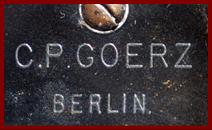
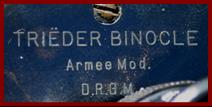
|
Prior to WWI, C.P, Goerz made a variety of center focus civilian binoculars. I believe my 7x Goerz Trieder Binocle (double barrel field glass) Armee mod (army model) independent focus binoculars were intended to be their military export model. According to Marco Bensi’s production data, my binoculars were made in 1907 and though it has no particular approval or property markings, or strichplatte/ reticule, it does have a leather attachment to fix them to a military tunic button, so that is an indication of previous military usage. Ref. info. credit cinecollectors/ Terry & Anna Vacani |
|
Painted over after disposal yellow broad arrow |
|
NON MINIATURE BINOCULARS & OPTICS: MOSTLY MILITARY |
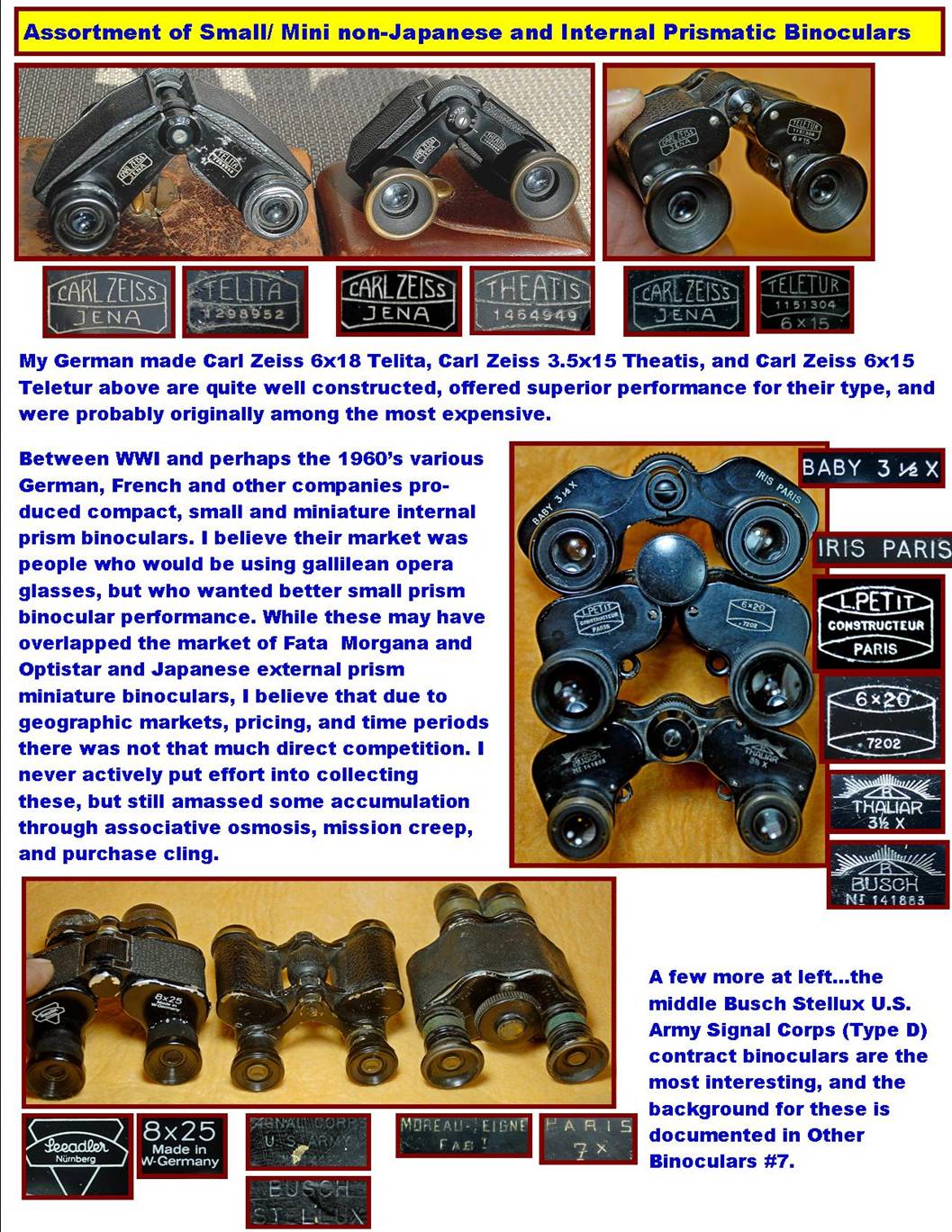
|
1941 and 1943 Watson & Baker British RAF binoculars, AM/ Air Ministry marked |




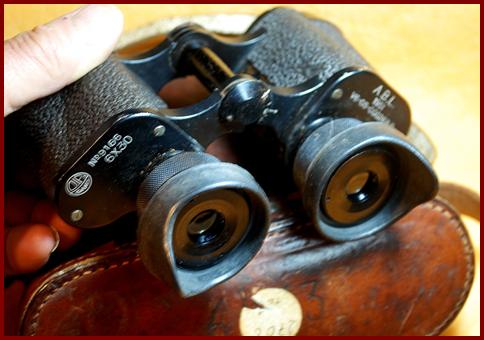
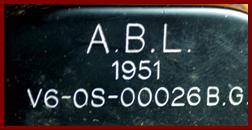
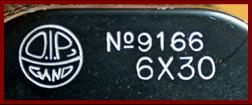
|
RAAF/ Royal Australian Air Force “Carl Zeiss M.-G.” Military Binoculars |
|
Relevant to all non standard Australian military binoculars, in WWII Australia had much need for air and sea observation. In 1941 the Australian government mandated by a National Security Order that civilians turn in binoculars suitable for military use, and over 18,500 were turned in , with over 8,000 of over 400 types serviced and issued to Australian military groups. (info credit) Bolton/ Monash Univ.”Optical Instruments in Australia in the 1939-1945 War”. Relevant to all non standard Australian military binoculars. To promote observation in 1941 the VAOC/ Volunteer Air Observers Corp. was formed to operate under the RAAF/ Royal Australian Air Force, which at peak had 24,000 civilian volunteers and 2,656 24hr observation posts around 50-100 mile zones of 8 Australian cites. All of needed to be equipped for observation work, and specifically including binoculars. |
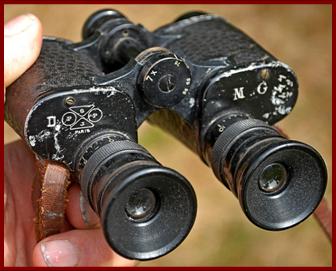
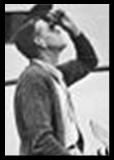
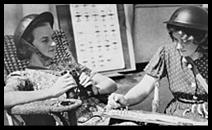
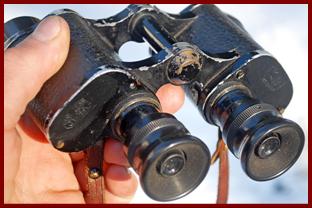



|
I believe my “Carl Zeiss” “M.-G.” logo 12x40 binoculars were perhaps French faux “Carl Zeiss” marked civilian market binoculars (speculative based on hand inscribed markings/ non Zeiss configuration) sold in Australia after WWI, then donated in WWII under the 1941 Australian govt. directive and marked and issued by the RAAF/ Royal Australian Air Force, probably to V.O.A.C. |
|
I have seen some other similar examples of these faux Carl Zeiss M.-G. logo binoculars. |
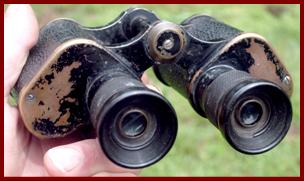
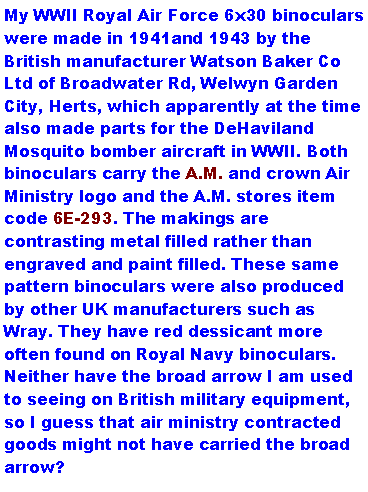




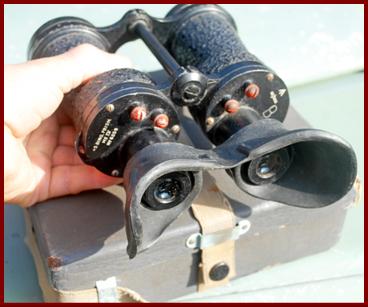
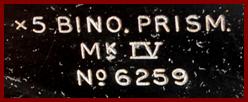
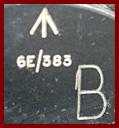

![Text Box: CLICK ON PAGE LINE. CLIQUEZ SUR LA LIGNE DE PAGE. KLICKEN SIE AUF SEITENZEILE. HAGA CLIC EN LÍNEA DE PÁGINA..[ページ行]をクリックします。НАЖМИТЕ НА СТРОКУ СТРАНИЦЫ. ALSO SEE INDEX.](image3473.gif)